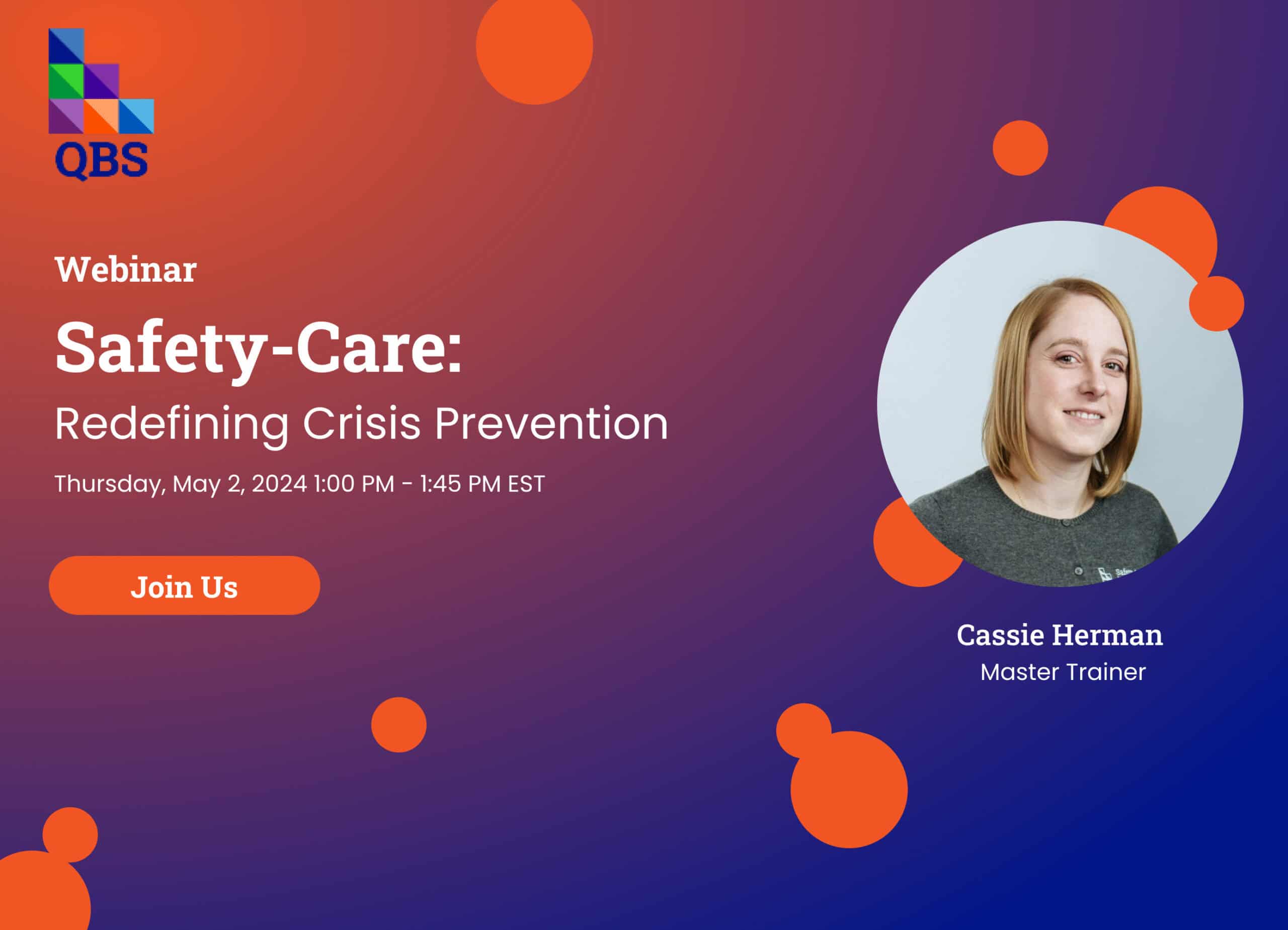When we talk about and practice the use of Differential Reinforcement (DR), one of the first steps is to pinpoint the desirable behavior (the behavior we want to see more of) that we’ll reinforce. In the beginning stages of this process, its typically best to start small, meeting the individual where they are, as we reinforce a singular desirable behavior through behavior chaining.
For example, if I’m trying to increase someone attending to a new task or skill, I might reinforce that specific behavior on a frequent schedule to increase its likelihood of occurring. But what happens when the skill is more complex, involving several steps? What is the best way to approach teaching these more complex skills? The purpose of this blog is to provide a tool for such situations.
Creating a Task Analysis
Let’s start with an example scenario to help depict the process. Imagine you’re serving an individual who would benefit from learning the skill of eating with a fork. There are many reasons why this goal could be selected, namely, to foster independence in some way. Selecting an appropriate behavior to chain considering this aspect as well as social validity is the first step in the process.
Next, we need to break the complex skill down into practical, measurable steps. A simple way to do this is by creating a Task Analysis (TA), which is identified as “the process of breaking a complex skill or series of behaviors into smaller, teachable units”. Using our sample scenario, let’s run through an example of what a simple TA might look like:
| Eating with a Fork |
| 1. Pick up the fork with either hand 2. Poke small piece of food with the fork and maintain the food on the fork 3. Lift fork to mouth 4. Open mouth 5. Place the fork carrying the piece of food in mouth 6. Close mouth 7. Pull fork from mouth, leaving piece of food inside of mouth |
Keep in mind, the above is just an example; there are many ways we
might break down the steps to this skill- for instance, the type of food or
piece size could be specified as well as the grasp used on the fork, and some
steps might be combined or broken apart even further depending on the needs of
the individual.
Defining Behavior Chains
Once we’ve identified and ordered the steps in a TA, we can start the process of creating a behavior chain. Behavior chains are defined by Cooper, et al. (2007) as “a sequence of responses in which each response produces a stimulus change that functions as conditioned reinforcement for that response, and as a discriminative stimulus for the next response in the chain; reinforcement of the last response in the chain maintains the reinforcing effectiveness of the stimulus changes produced by all previous responses in the chain…”
In other words, you need the first step in the process in order to elicit the next, and so on, until the complex behavior is complete. For example, you first have to pick up the fork (step 1) in order to poke a small piece of food with it (step 2) to then eventually get the piece of food to the mouth.
Ways to Create a Behavior Chain
There are three typical ways to go about creating a behavior
chain- forward, backward and total task as outlined below:
- Forward Behavior Chaining
- Learner is taught/assisted with the first step in the task analysis, while the instructor completes the rest of the steps, teaching the second step only after the first step is completed by the learner independently. Then onto the third step, and so on, until the entire chain is completed independently by the learner.
- Backward Behavior Chaining
- Instructor completes all but the last step, which is performed by the learner, moving on to teach the second to last step, once the last step is completed by the learner independently
- Total Task Behavior Chaining
- Learner is taught/assisted through all the steps, each time the TA is practiced until all steps are completed by the learner independently
The type you chose should be based off the complex skill being taught as well as the learner. Because this blog is serving as an introduction to the basic process, we’ll discuss each in greater detail with specific examples as well as the research behind them in a future blog. For now, let’s take a look at one last set of examples, piecing our TA together with a way to track teaching in the three types of behavior chains:
Worksheet Examples
The following sheets are examples across two days/dates that the skill might have been practiced and simulate what documentation could look like.
Forward Behavior Chain
| Eating with a Fork – Forward Chain Date: 1/2/2020 | |||
| Step | Completed by Instructor | Completed by learner w/ assistance | Completed Independently |
| 1. Pick up the fork with either hand | x | ||
| 2. Poke small piece of food with the fork and maintain the food on the fork | X | ||
| 3. Lift fork to mouth | X | ||
| 4. Open mouth | X | ||
| 5. Place the fork with piece of food in mouth | X | ||
| 6. Close mouth | X | ||
| 7. Pull fork from mouth, leaving piece of food inside of mouth | x |
| Eating with a Fork – Forward Chain Date: 1/8/2020 | |||
| Step | Completed by Instructor | Completed by learner w/ assistance | Completed Independently |
| 1. Pick up the fork with either hand | x | ||
| 2. Poke small piece of food with the fork and maintain the food on the fork | x | ||
| 3. Lift fork to mouth | X | ||
| 4. Open mouth | X | ||
| 5. Place the fork with piece of food in mouth | X | ||
| 6. Close mouth | X | ||
| 7. Pull fork from mouth, leaving piece of food inside of mouth | x |
Backwards Behavior Chain
| Eating with a Fork – Backwards Chain Date: 1/2/2020 | |||
| Step | Completed by Instructor | Completed by learner w/ assistance | Completed Independently |
| 1. Pick up the fork with either hand | x | ||
| 2. Poke small piece of food with the fork and maintain the food on the fork | x | ||
| 3. Lift fork to mouth | X | ||
| 4. Open mouth | X | ||
| 5. Place the fork with piece of food in mouth | X | ||
| 6. Close mouth | X | ||
| 7. Pull fork from mouth, leaving piece of food inside of mouth | x |
| Eating with a Fork – Backwards Chain Date: 1/8/2020 | |||
| Step | Completed by Instructor | Completed by learner w/ assistance | Completed Independently |
| 1. Pick up the fork with either hand | x | ||
| 2. Poke small piece of food with the fork and maintain the food on the fork | x | ||
| 3. Lift fork to mouth | X | ||
| 4. Open mouth | X | ||
| 5. Place the fork with piece of food in mouth | X | ||
| 6. Close mouth | x | ||
| 7. Pull fork from mouth, leaving piece of food inside of mouth | x |
Total Task Behavior Chain
| Eating with a Fork – Total Task Date: 1/2/2020 | |||
| Step | Completed by Instructor | Completed by learner w/ assistance | Completed Independently |
| 1. Pick up the fork with either hand | X | ||
| 2. Poke small piece of food with the fork and maintain the food on the fork | X | ||
| 3. Lift fork to mouth | X | ||
| 4. Open mouth | X | ||
| 5. Place the fork with piece of food in mouth | X | ||
| 6. Close mouth | X | ||
| 7. Pull fork from mouth, leaving piece of food inside of mouth | X |
| Eating with a Fork – Total Task 1/8/2020 | |||
| Step | Completed by Instructor | Completed by learner w/ assistance | Completed Independently |
| 1. Pick up the fork with either hand | X | ||
| 2. Poke small piece of food with the fork and maintain the food on the fork | X | ||
| 3. Lift fork to mouth | x | ||
| 4. Open mouth | X | ||
| 5. Place the fork with piece of food in mouth | X | ||
| 6. Close mouth | x | ||
| 7. Pull fork from mouth, leaving piece of food inside of mouth | X |
Loved this Behavioral Blog? Read more of our series of Behavioral Blogs: Group Contingencies for Positive Behavior or How to Make Reinforcement Effective.
To learn more about Safety-Care and the services that we offer at QBS, email info@qbs.com.
References:
Cooper, J. O. H., Heward, T. E., William, L., Cooper, J. O., Heron, T. E., & Heward, W. L. (2007). Applied Behavior Analysis.

